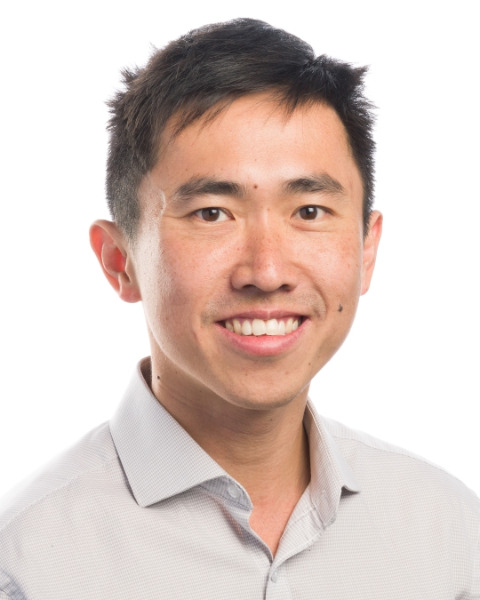ISMRM - SCMR Workshop
Power Pitch 2: On the Improved High-Resolution Cardiac DTI with a Novel Data-Adaptive Sampling and Reconstruction Strategy

Jurgen E. Schneider, PhD
Chair in Biomedical Imaging
University of Leeds
University of Leeds, United Kingdom- SG
Shokoufeh Golshani, MSc
Postgraduate Researcher
University of Leeds, United Kingdom 
Irvin Teh, PhD
Senior Research Fellow
University of Leeds, United Kingdom- NR
Nishant Ravikumar, PhD
Lecturer in Computer Science
University of Leeds, United Kingdom 
Alejandro Federico Frangi, FREng
Bicentennial Turing Chair in Computational Medicine
University of Manchester
University of Manchester, United Kingdom
Jurgen E. Schneider, PhD
Chair in Biomedical Imaging
University of Leeds
University of Leeds, United Kingdom
Presenting Author(s)
Primary Author(s)
Co-Author(s)
Cardiac Diffusion Tensor Imaging (cDTI) is a promising tool for non-invasive assessment of myocardial microstructure and biomarker development. However, its clinical utility is limited by the lengthy scan times required to capture multiple diffusion-weighted (DW) images, each with different gradient directions. DW images, taken from the same anatomical region, exhibit high intra-image correlations. Prior studies have leveraged these correlations to reconstruct images from undersampled data. This study explores using correlations in both the frequency (k-space) and spatial domains with a novel sampling/reconstruction framework to reduce scan time while enabling higher spatial resolutions.
Methods: We developed a data-adaptive, self-navigated spiral sampling method optimized for cDTI, utilizing a multilevel density function in line with recent advances in compressed sensing (CS) MRI [1]. The sampling trajectory is designed to match the structure of the DW signal and is compatible with standard MRI hardware. Key parameters include a maximum gradient strength of 80 mT/m, a slew rate of 180 mT/m/ms, and a readout duration of 10 ms. Our method samples one DW image using a high-resolution interleaved spiral trajectory (kmaxHR = 1/2RES, RES = 1 mm), while the remaining images are sampled at lower resolution using a single-shot trajectory (kmaxLR = 0.4×kmaxHR), with golden-angle rotations added to enhance incoherency. Figure 1 shows the proposed sampling and the k-space of two arbitrary DW images, highlighting the correlated regions.
We modeled the diffusion signal Sν×q, where ν represents the number of voxels and q is the number of DW directions, as a sparse linear combination of coefficients Cν×r and basis functions from an overcomplete dictionary Ωr×q [2], with r denoting the number of basis functions in the dictionary. To improve reconstruction, we imposed sparsity constraints on both the coefficients and the dictionary bases to suppress components related to undersampling and noise. The reconstruction was formulated as a constrained optimization problem, solved using an augmented Lagrangian scheme with variable-splitting:
||A(CΩ)-B||F2 + λ1||Τ1(C)||1 + λ2||Τ2(Ω)||1
We used Τ1 = Ψ (a 2D wavelet transform) and Τ2 = [∇x ∇y ]T (spatial finite-difference operator), and r = 48 basis functions. We retrospectively evaluated our method on fully sampled cDTI data from an ex vivo rat heart [3] and a simulated in vivo free-breathing human heart using the MRXCAT phantom [4], comprising 12 DWIs.
Results:
Results obtained from ex vivo data are presented in Figure 2, with RMSE values displayed in the bottom right panel compared against the reference. Figure 3 shows three short-axis slices reconstructed from the MRXCAT-cDTI phantom and the corresponding DTI metrics. The results indicate that diffusion-related information is greatly preserved relative to the reference, despite considerable undersampling. The method effectively reconstructs highly blurred structures, improving spatial resolution. Additionally, the application of transform-sparsity constraints to both the dictionary and coefficients yields a sparser data representation, which further enhances image quality.
Conclusion:
Our approach has the potential to achieve full-heart coverage for cDTI with 12 slices and 12 diffusion directions within 192 TRs (5 + 11 shots × 12 slices). This configuration allows for cDTI examination in under 4 minutes (assuming 1 shot per TR and TR = 1 cardiac cycle), while ensuring accurate diffusion parameter maps.

